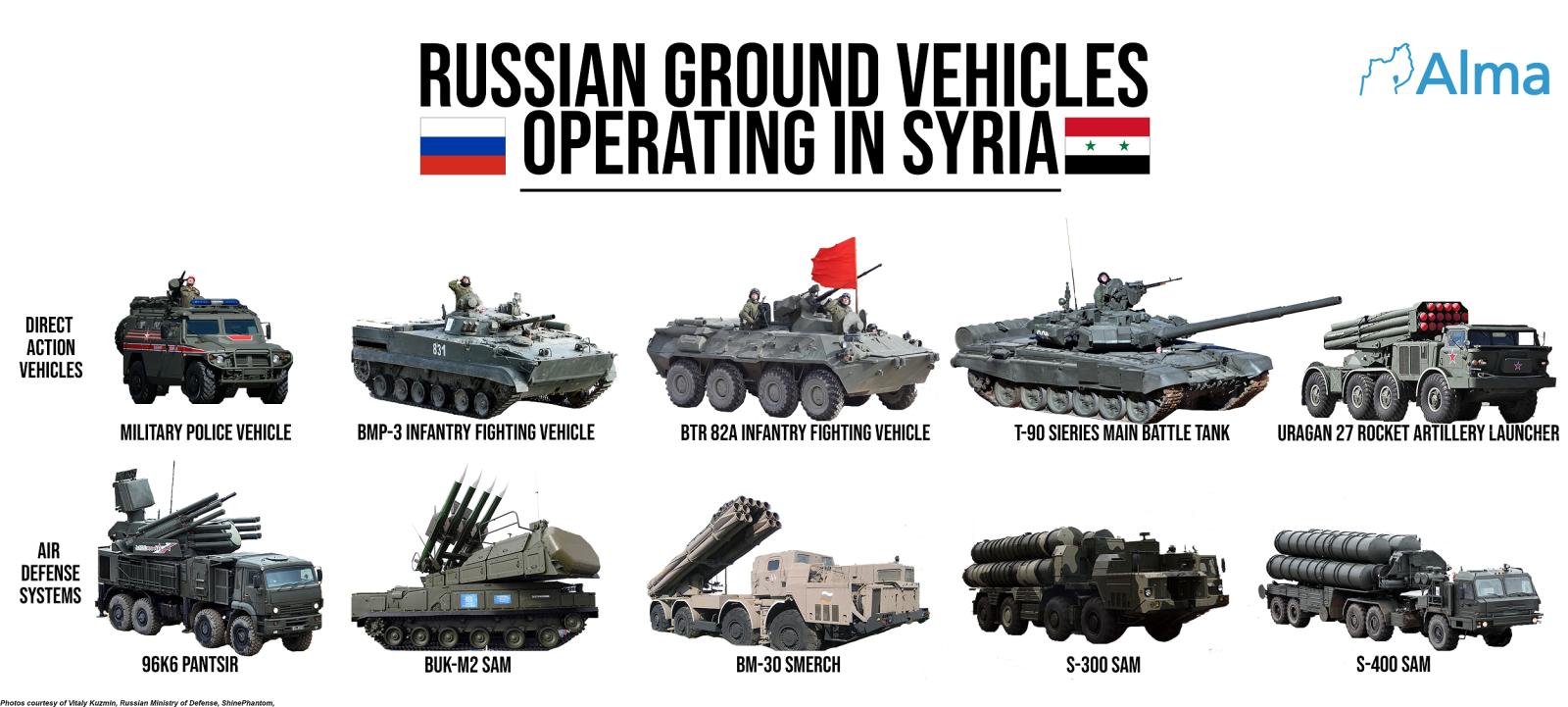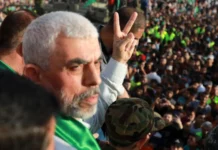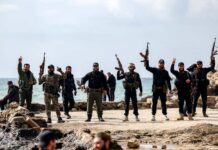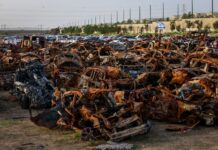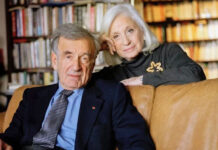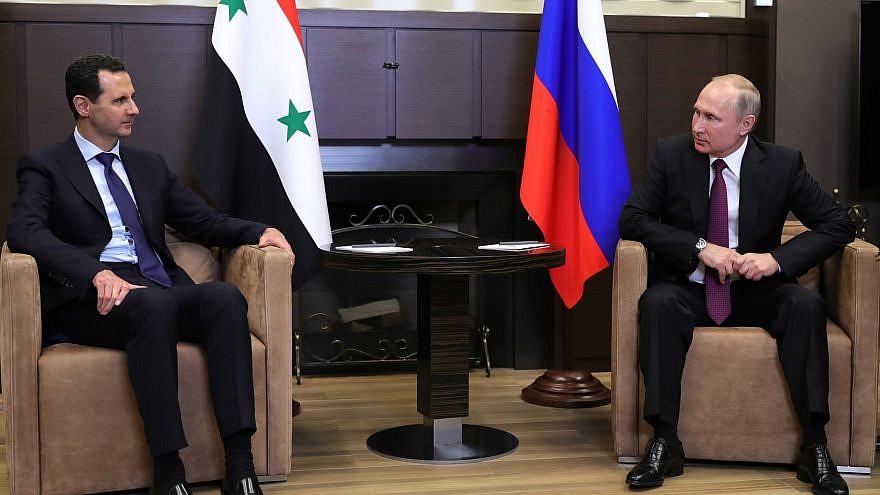Russia has likely turned a blind eye to Syrian and Iranian transfers of Russian-made weapons to Hezbollah in Lebanon, a new report by an Israeli defense research center has assessed.
Maj. (res.) Tal Be’eri, head of the research department at the Alma Center, which published the report, told JNS on Tuesday that although both Russia and Israel share an overall interest in limiting Iran’s takeover plans for Syria, that has not prevented significant tensions between Moscow and Jerusalem or rule out a future potential tactical pinpoint military clash.
Either Iran or the Syrian regime led by Bashar Assad facilitates such transfers or both in cooperation with one another.
“It is highly likely that the Russians have enabled the transfer of Russian surface-to-air missile defenses to Hezbollah, such as the SA-8, SA-17 and SA-22, as well as the [advanced anti-ship cruise missile] the Yakhont,” assessed Be’eri. The Russian-made Yakhont missiles pose a significant threat and are considered to be the most advanced type of weapons in its category in the world. It flies at a low altitude over the waves and can reach Mach 2 to Mach 3 speeds (up to three times the speed of sound, making it a supersonic missile).
“If the Russians would not have wanted this to happen, I doubt it would. These are all advanced Russian weapons that have reached Syrian territory before arriving in Lebanon.”
“Could Assad and the Iranians do this independently? That’s unlikely,” he stated. “This is one of their retribution tactics against Israel.”
Other ways that Russia can retaliate against Israel is by transferring advanced air-defense systems directly to Syrian control, as Moscow did after the downing of a Russian intelligence-gathering aircraft on Sept. 17, 2018, by Syrian air-defense missiles that had been targeting Israeli aircraft. Fifteen Russian service members were killed in that incident.
As a result, Be’eri said, Russia transferred control of an S-300 anti-aircraft battery stationed in Syria to Assad’s army, creating a new challenge for the Israeli Air Force, though one Be’eri said Jerusalem can overcome. This comes despite prior Israeli requests to Russia to refrain from transferring the system to Syrian hands.
“The handover of the S-300 batteries to the Syrians (located now in the area of Masyaf in northwestern Syria) constituted a sharp Russian message—‘punishment’ against Israel,” said Alma’s report. “The transfer of these batteries to the Syrians enabled the direct use of advanced weapons against the Israeli Air Force. By turning over the anti-aircraft batteries, the Russians made it even more difficult and challenging for Israel. This may have forced Israel to change its course in terms of attack tactics and defense measures of an attacking force and dealing with a missile-safe/missile-stricken area. With the transfer of the S-300 to the Syrians, the range of threats deriving from the Syrian Defense Forces missiles increased.”
An additional signal of Russian annoyance with Israel’s strike in Syria could come in the form of passing on advanced intelligence of attacks to the Iranian axis operating in Syria, said Be’eri, as well as publicly releasing operational details about Israel’s alleged attacks.
In the past, and as recently as April, Russia has released what it claimed was information on the type of attacking Israeli aircraft, their number, the direction of attack, how many missiles were intercepted, and on occasion, the type of missile used by Israel.
“The purpose of the Russian publication was to send a message of dissatisfaction with Israeli activity in Syria in particular and sometimes also from overall Israeli policy in general,” according to Alma’s report. “The last case of such publication was on April 16, when the Russians published the details of an airstrike carried out on April 14 west of Damascus. The purpose of this publication can be linked to the message that the Russians wanted to convey to Israel in connection with Russian dissatisfaction with Israeli policy regarding the war in Ukraine.”
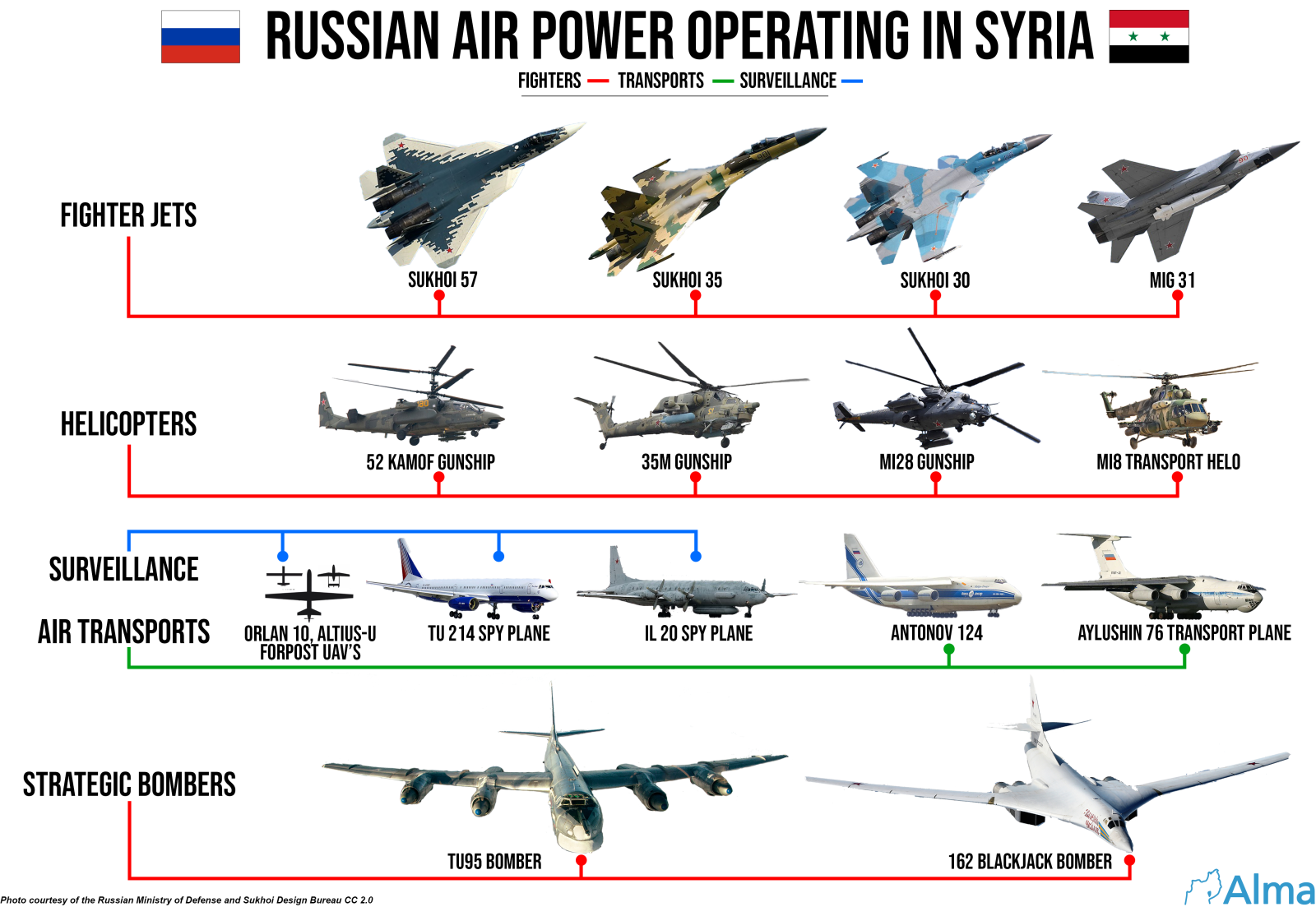
‘The extent of the forces redeployed is not clear to us’
Although Russia has sent some units that were in Syria to fight in the war it unleashed on Feb. 24 on Ukraine, the report stressed that Russia will not abandon the Syrian arena, “which it considers a strategic arena,” arguing that doing so would create a vacuum quickly filled by the radical Iranian axis.
“Before the outbreak of war in Ukraine, the Russian military force in Syria consisted of around 10,000 soldiers in 12 bases,” said the report. The two main Russian bases in Syria are the Hmeimim Air Base and the Tartus naval base, which Russia has leased from Damascus for 50 years.
The report provided a detailed inventory of Russian platforms in Syria, listing dozens of fighter jets, bombers, attack helicopters, transport aircraft and intelligence-gathering aircraft deployed to Syria.
“As of now, it is not clear whether, in light of the war in Ukraine, Russia has substantially reduced the number of troops in Syria and transferred them to fight in Ukraine. It is clear that Russian forces have been transferred from Syria to Ukraine, but the extent of the forces redeployed is not clear to us,” the report said.
Ultimately, said Be’eri, Russia has always seen Syria as a strategic outpost in the Middle East—a view that Moscow has had through much of the 20th century as well.
In 1970, Russian Air Force pilots taking off from Egypt fought dog fights with the Israeli Air Force during the War of Attrition and were shot down, he recalled.
Today, a direct Russian-Israeli clash in the skies over Syria can’t be ruled out either.
A scenario in which a Russian air-defense battery stationed in northern Syria locks on to an Israeli Air Force plane during an attack is feasible. “In such a scenario, in which we estimate its likelihood at low to moderate, the Russian battery will, in all probability, not fire,” said Alma’s report. “However, as part of risk management, Israel needs to assume a strict assumption that there is also a possibility that the Russian battery will fire. In such a case, the Israeli response will depend on Israeli strategic policy, the end result (whether or not the Israeli plane was hit) and the conduct of the [Russian-Israeli] coordination mechanism.”
The report continued, saying that “a scenario in which Russian Air Force planes stationed in Syria will take action against Israeli Air Force planes in our assessment is a scenario with a low and even very low probability. However, should such a scenario occur, the Russian pilots would have to deal with technology and pilots of a different standard than they have not come up against to date.”
“Israel is a regional power, and there are elements in Syria that threaten its security,” said Be’eri. “As a result, it must be Israel that sets the rules of the game, and guest actors in the region need to learn to align themselves with those rules.”
